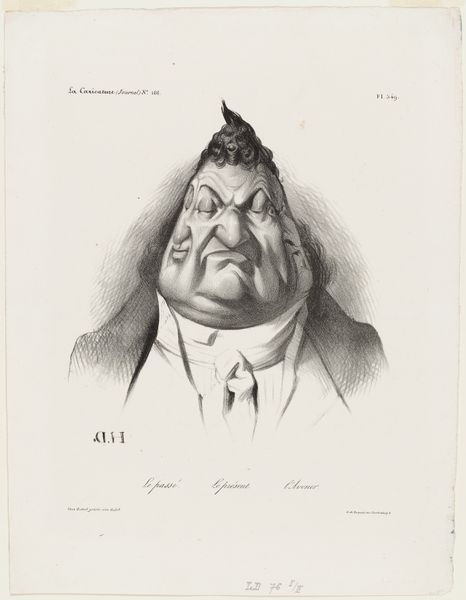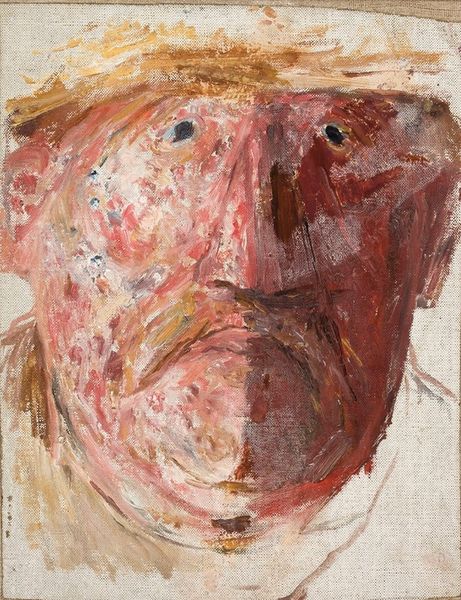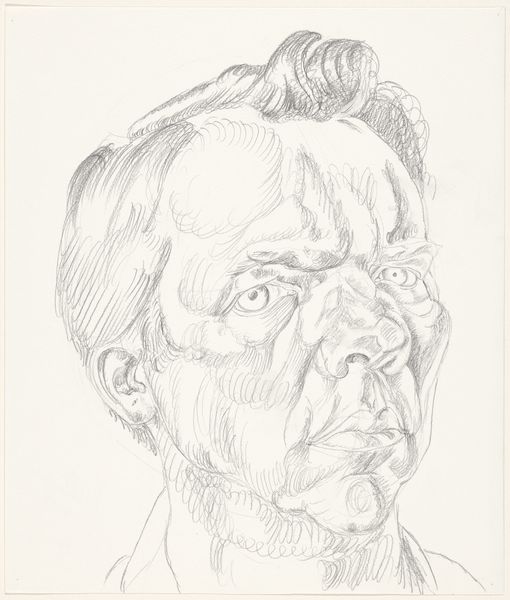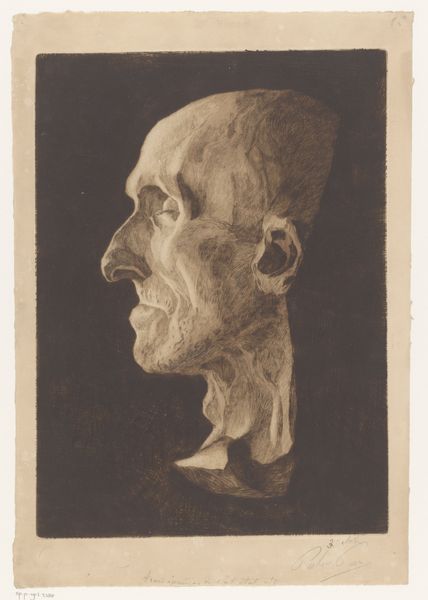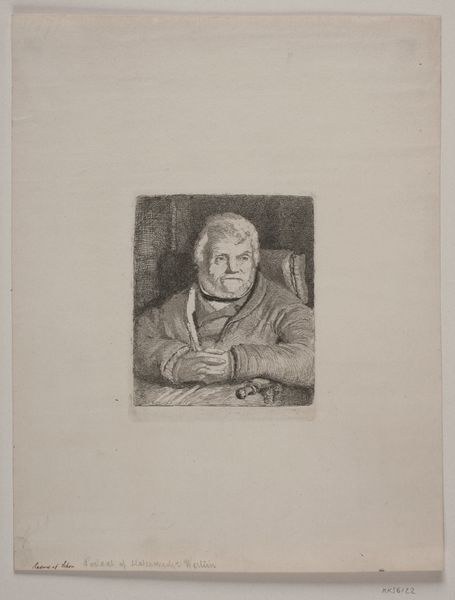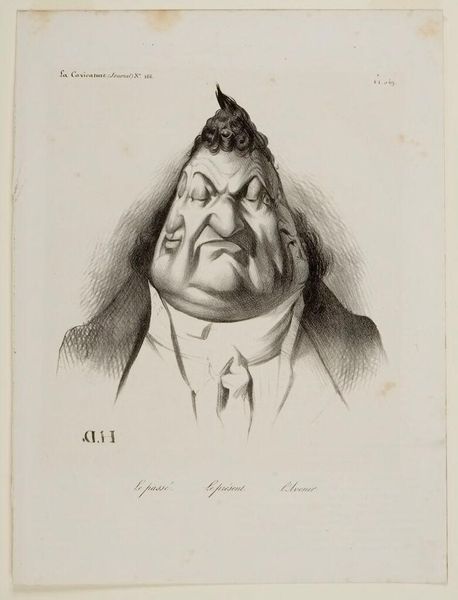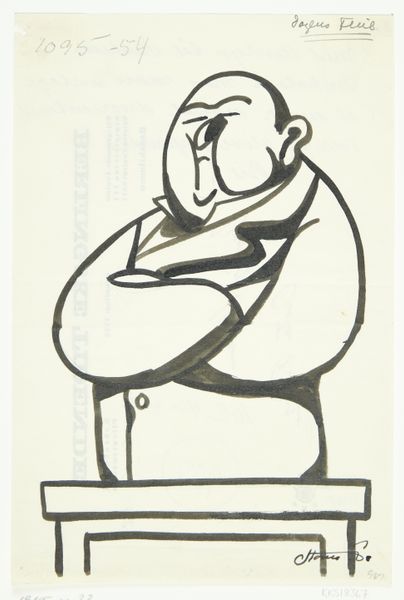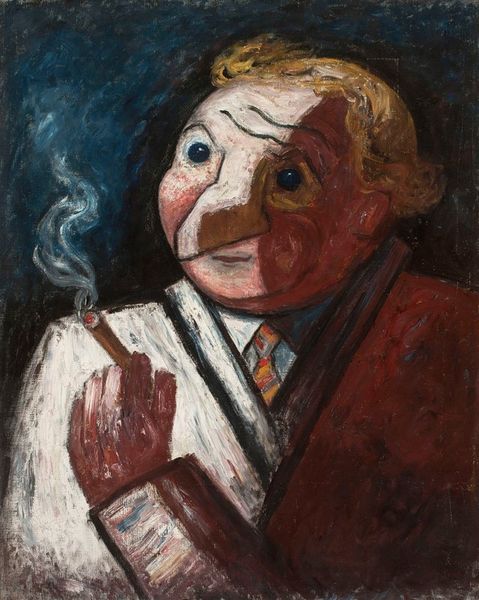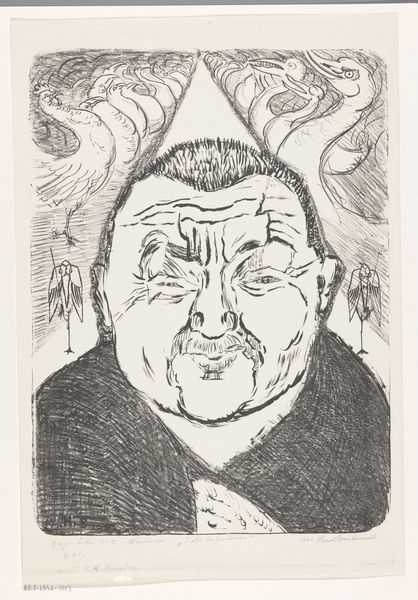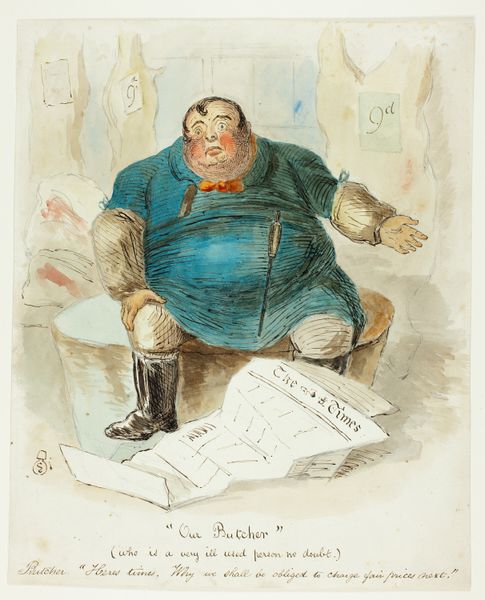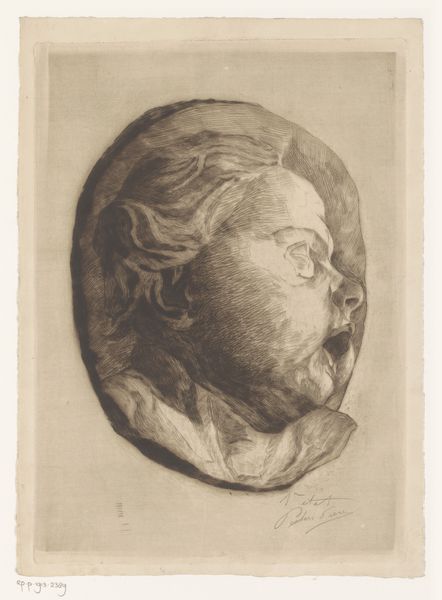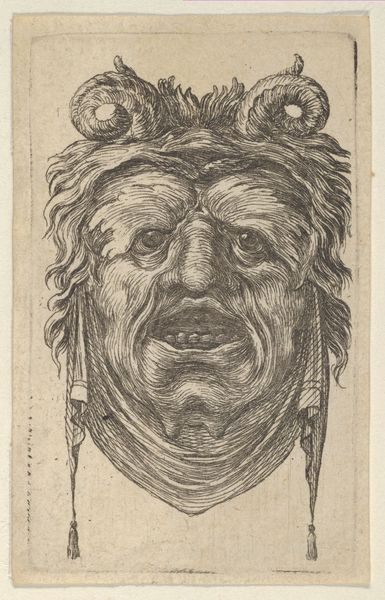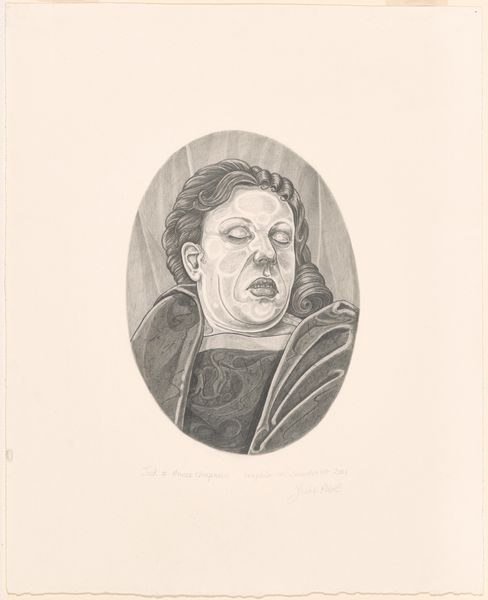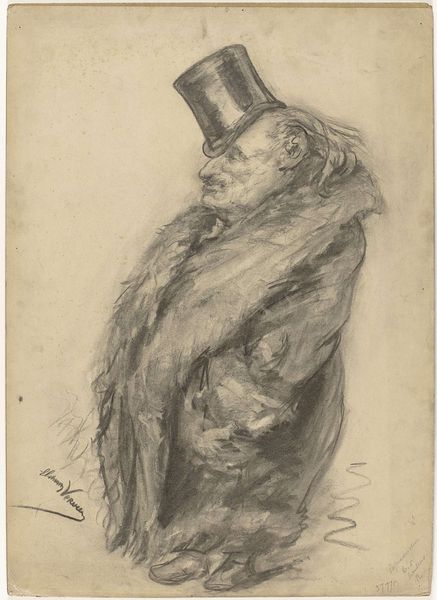
Copyright: Public domain
Editor: We're looking at "Jean-Marie Harle, Harle father (1765-1838), Deputy," a sculpture created by Honoré Daumier in 1833 using earthenware. The rough texture and unflattering realism definitely leave an impression. What is your perspective on this piece? Curator: The modelling reveals much about Daumier’s methodology. Note the economy of line and form, sculpted using an interplay between the materiality of clay and the portrait’s social critique. Observe the stark contrast between the coarse rendering of the clay and the delicate treatment of the subject’s features; where do these formal devices direct your attention? Editor: I'd say that contrast emphasizes the sitter's, Jean-Marie Harle’s, rather, well, heavy features and gives a satirical edge. The visible tool marks and the unrefined surface also feel deliberate, like Daumier wanted to present him in a direct, almost confrontational manner. Curator: Precisely. Note also the monochromatic palette employed. How might we understand this formal constraint within the framework of Realist sculpture and its intent to foreground objective observation? Is it possible to consider its sculptural presence devoid of political meaning? Editor: I suppose without the colour distractions, the pure form really makes the sculpture speak for itself! It is also interesting to note that in Daumier’s depiction of Harle there is attention given to the play of light and shadow across the form. Curator: Yes, the manipulation of form as the only carrier of meaning is compelling. The focus is solely on how Daumier's skillful manipulation of line and form expresses meaning. Editor: I see this sculpture in a completely new light now, moving beyond subject to examine line, shape, and materiality. Thank you for opening my eyes to it!
Comments
No comments
Be the first to comment and join the conversation on the ultimate creative platform.
